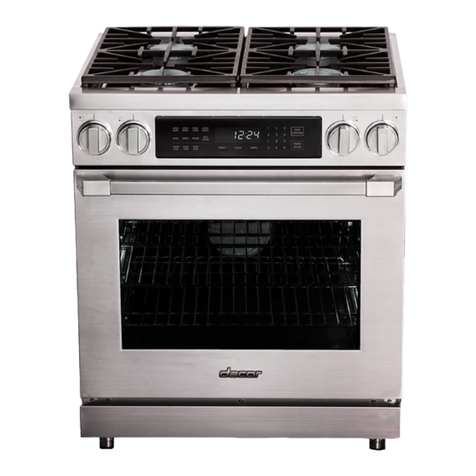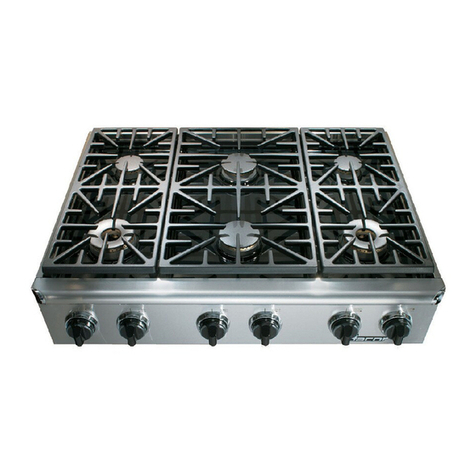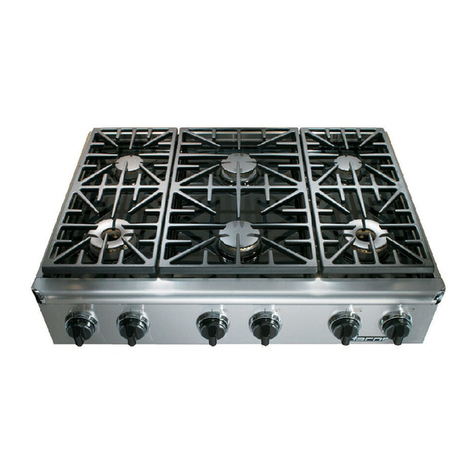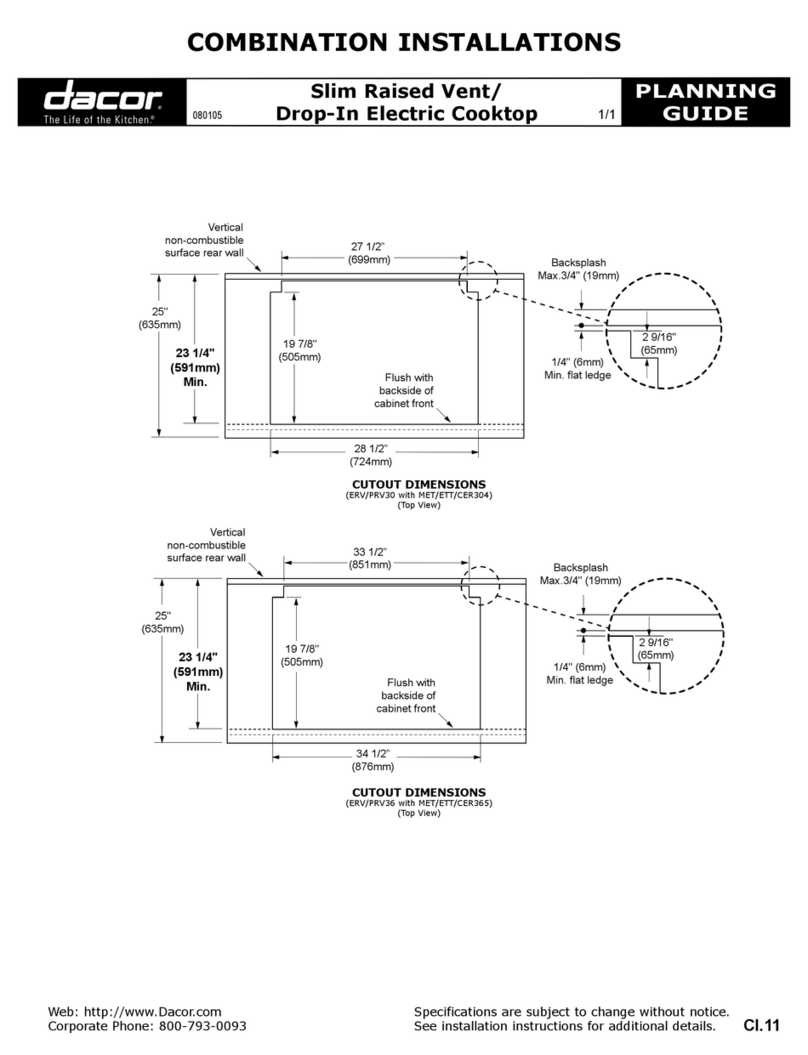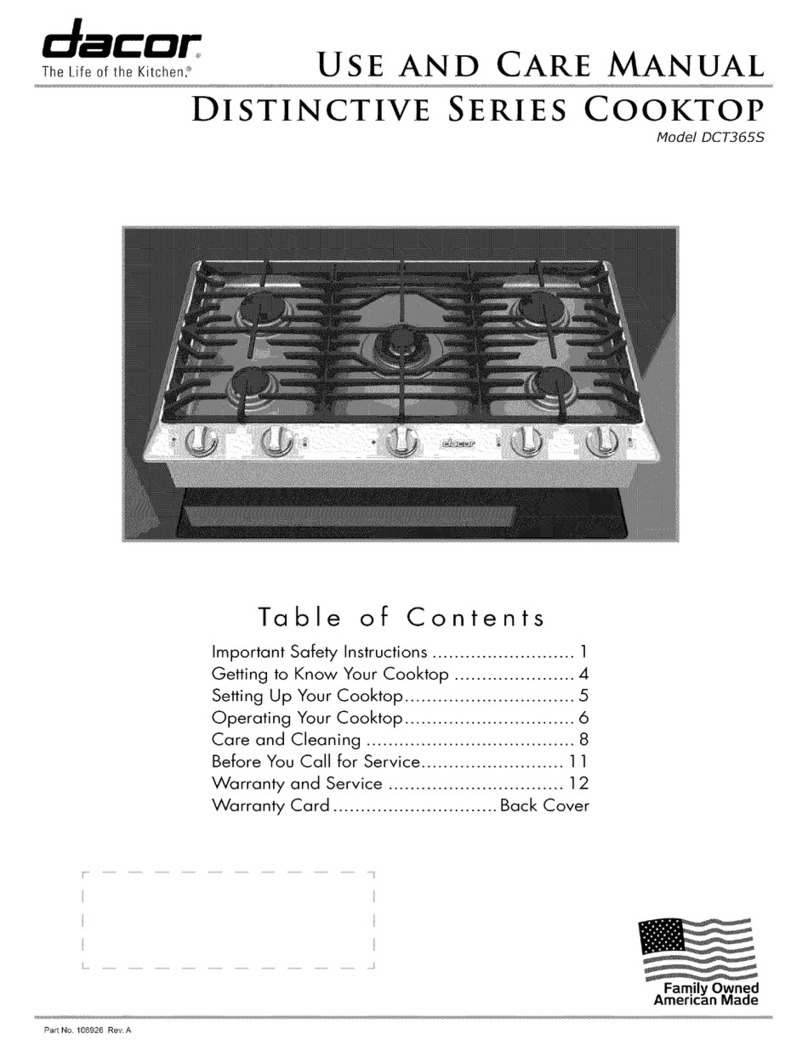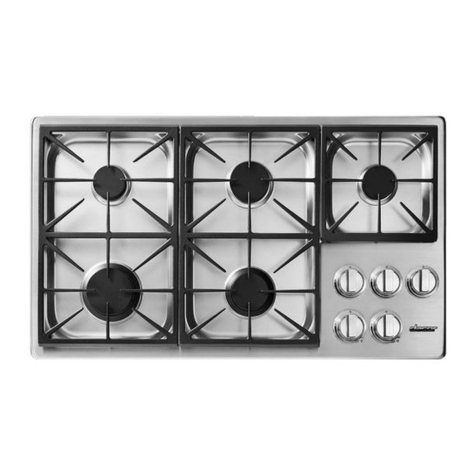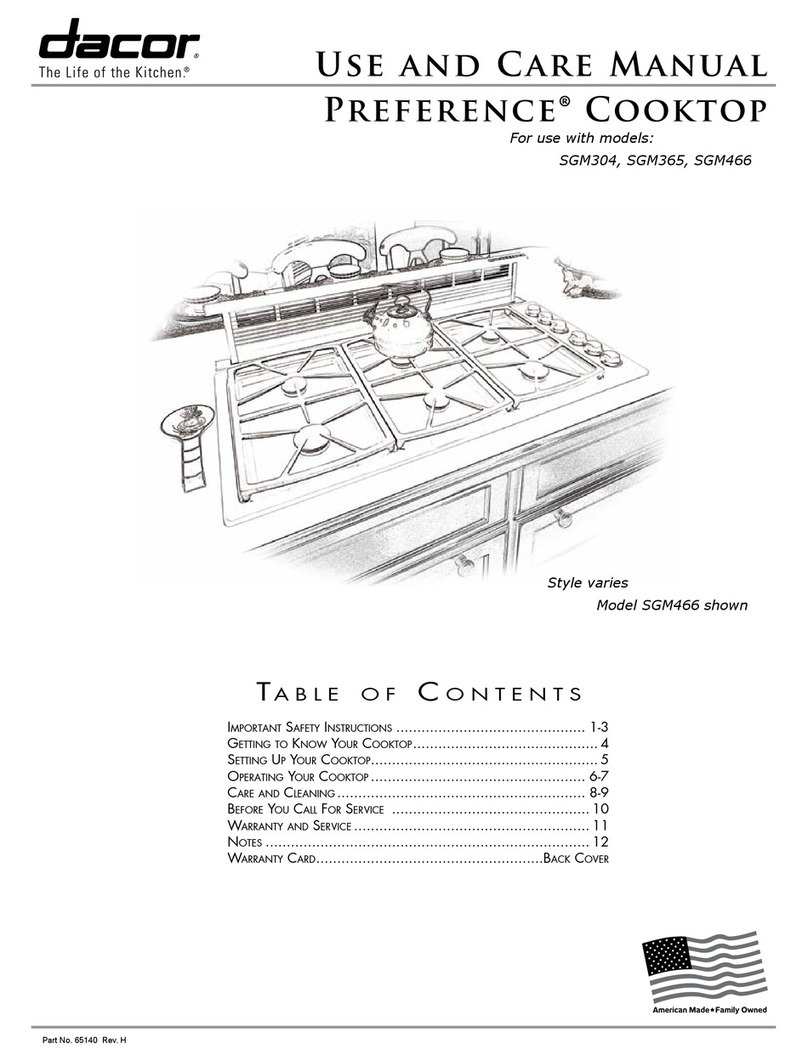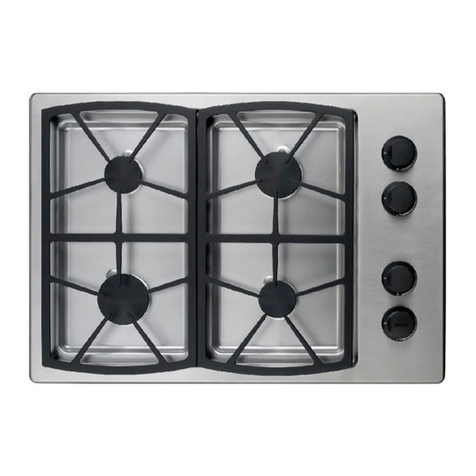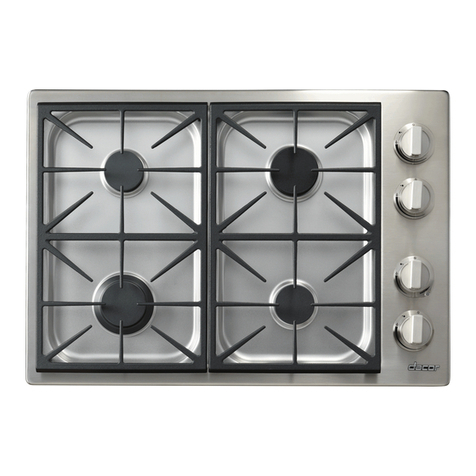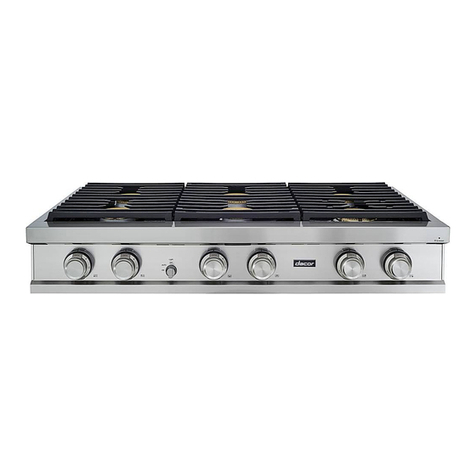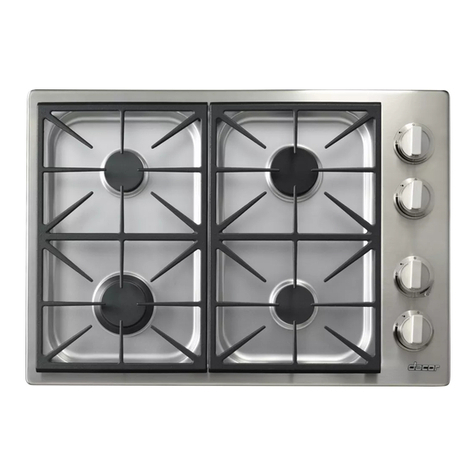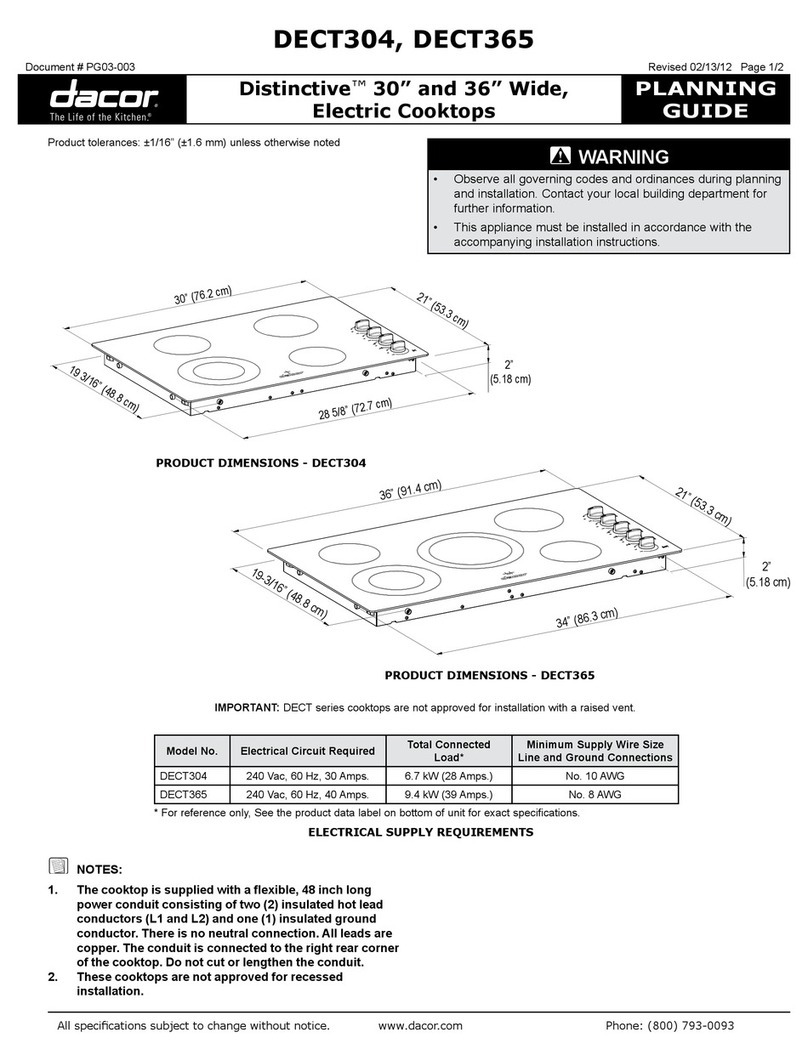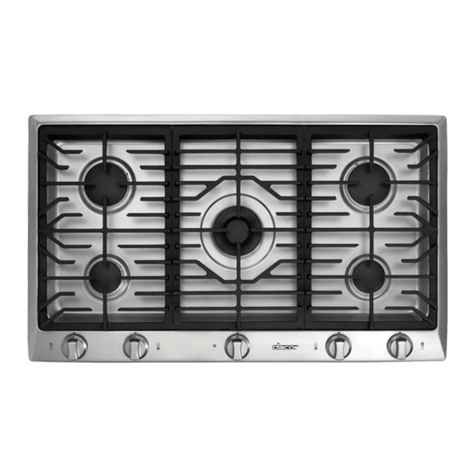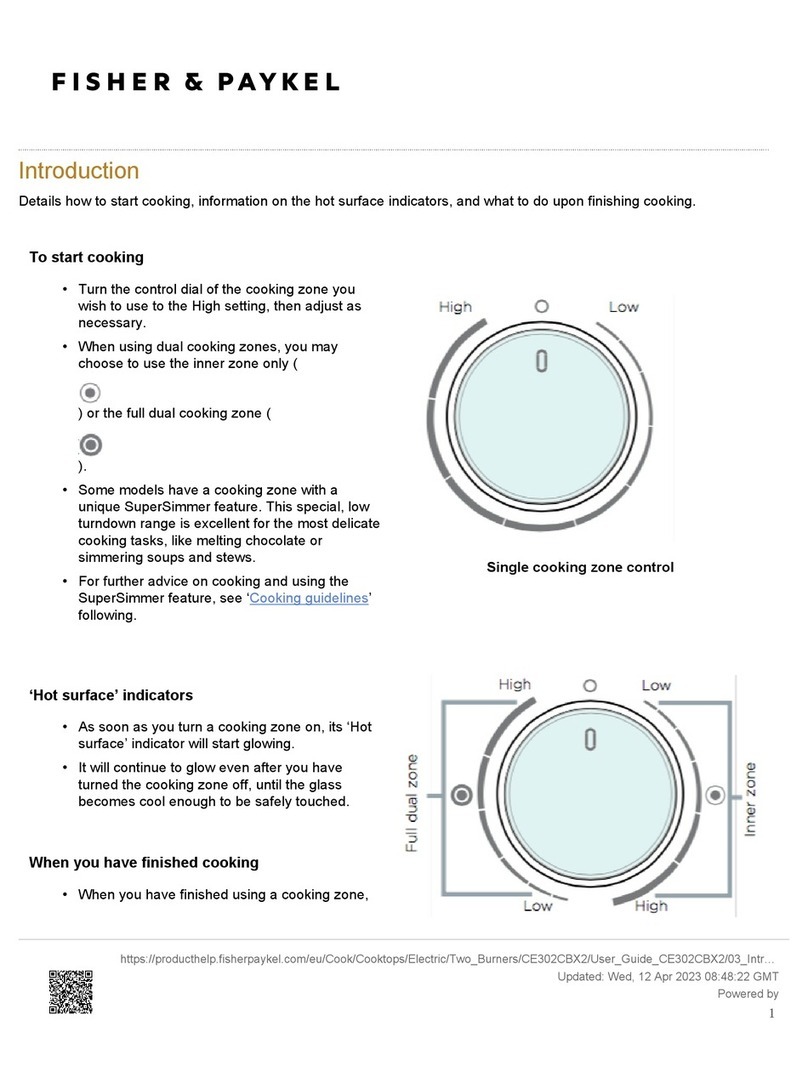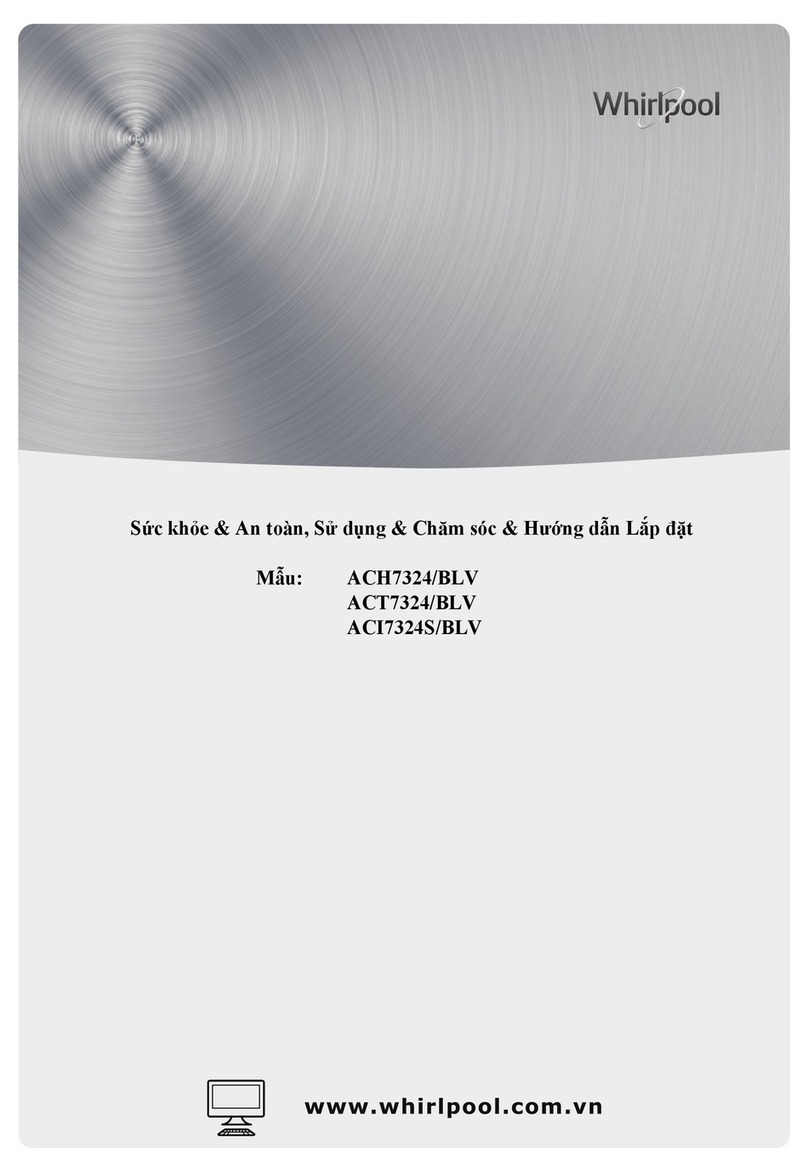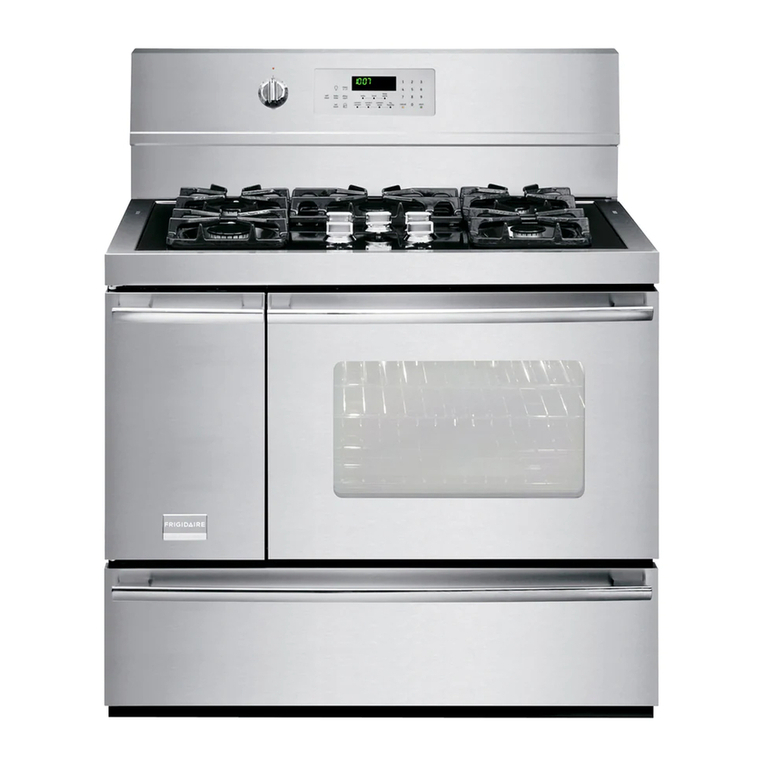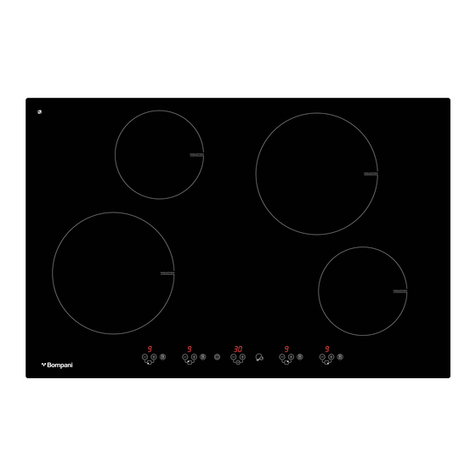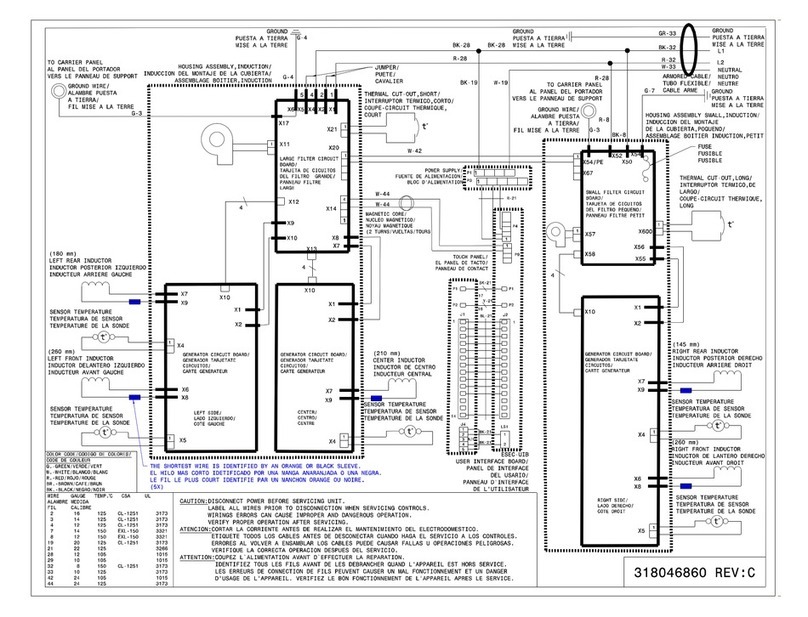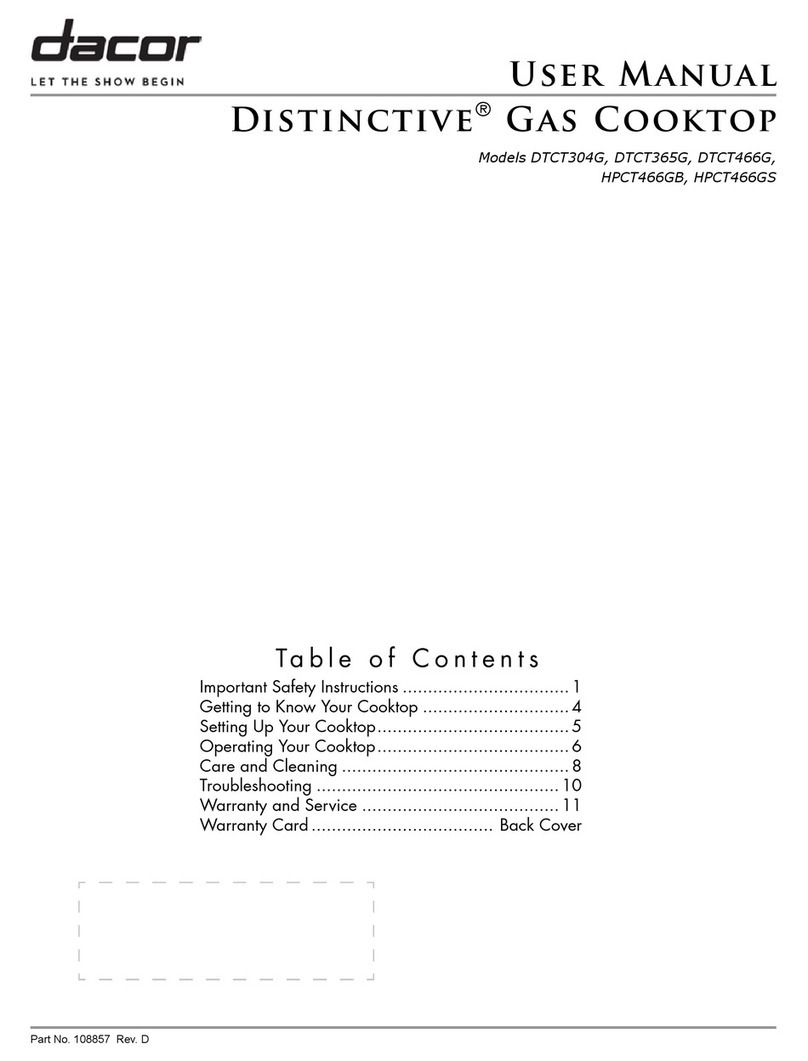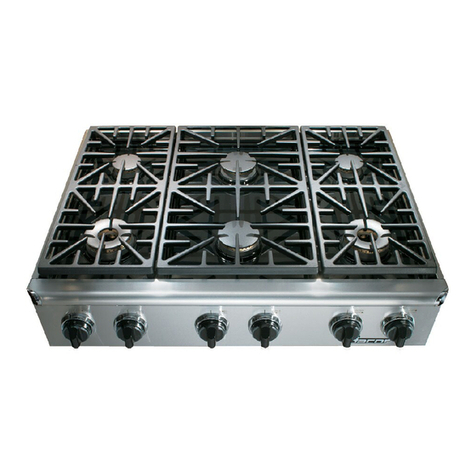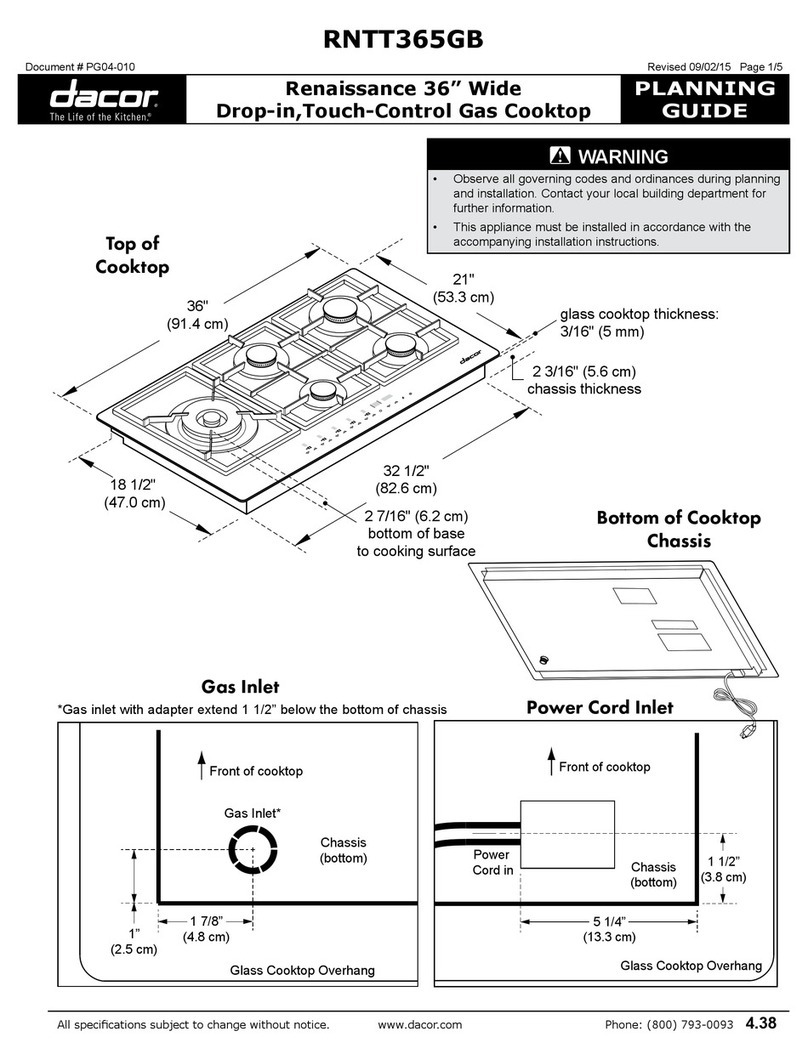6. Donotusewaterongreasefires.Aviolent
steamexplosionmayresult.Smotherany
flameswithalid,cookiesheetorfiattray.
Flaminggreasecanbeextinguishedwith
bakingsodaoramulti-purposechemicalor
foamextinguisher.
7. DonotallowpothoIderstotouchgas
burners.Donotuseatowelorbulkycloth
asapotholder.
8. Donotblockorobstructtheholesbehind
thecontrolknobs.Blockingtheseholes
mayaffectburneroperationandmayresult
inahazard.
9. Whenusingthecooktop,donottouchthe
grates,burnercaps,burnerbases,orany
otherpartsinproximitytotheflame.These
componentsmaybehotenoughtocause
burns.
10.Ifthecooktopisnearawindow,donotuse
longcurtainsasawindowtreatment.They
canblowoverthecooktopandcreateafire
hazard.
11.Donotcovertheburnersandgrateswith
anythingexceptproperlyselectedutensils.
Decorativecoversshouldnotbeused.
12.Donotheatunopenedfoodcontainers
suchasbabyfoodjarsandcans.Pressure
build-upmaycausethecontainertoburst
andcauseinjury.
13.Donotuseabrasiveorcausticcleaners
ordetergentsonthisappliance,asthese
maycausepermanentdamage.Donot
useaerosolcleaners,asthesemaybe
flammableorcausecorrosionofmetal
parts.
14.Donotuseorattempttousethisappliance
intheeventofapowerfailure.
Selecting the Proper Cookware
Utensils will affect the overall safety and
performance of cooktop cooking, so it is
important to select them carefully. An improperly
selected utensil will not cook efficiently or evenly.
For best results, follow these guidelines:
1. Use medium to heavy gauge metal
cookware with flat and smooth bottoms for
greatest efficiency
2. Use utensils with tight fitting lids to retain
heat, odors, and steam.
Operating the Control Valves
Indicators have been placed on the control
housing next to each control knob to clearly
identify the burner controlled by each knob.
To indicate whether the knob controls burners
on the left or right, the knobs are grouped
accordingly. The burner being controlled is
indicated by a blue indicator light, while the
adjacent burner is illustrated by a flame icon on
the control panel.
I
To light a particular burner, press in on the
corresponding control knob, then immediately
rotate the knob counterclockwise from the "OFF"
(e) position to the "HIGH" position (larger flame
icon). All ignitors will spark continuously until
the gas ignites on the selected burner. Ignition
should occur within four seconds of turning to
this position. The ignitors will stop sparking as
soon as the burner ignites.
Once the burner is lit, reduce the flame height
if desired by rotating the control knob further
counterclockwise, then place the utensil on
the grate. The flame indicator lines indicate
progressively lower flame heights as the lines
get thinner.
_NOTE:
You may hear the cooling fan during
operation. This is a normal condition
designed into the cooktop to ensure your
comfort and safety.
Panel \
Valve Shaft
Control Knob
Trim Ring
Valve Operating Procedure
Press knob in.
Turn knob counterclockwise to high position
until the burner ignites. After ignition,
continue rotating knob counterclockwise to
set the desired flame height.
_} IMPORTANT:
1. If the gas does not ignite within four
seconds, turn off the valve. Allow
at least two minutes for any gas to
dissipate, then repeat the lighting
procedure.
2. Burner ignitors must always be kept
clean and dry to function properly.
Due to the Perma-Flame TM reignition
feature, dirty or wet ignitors will result
in constant sparking, even if there is
aflame present. Additionally, ignitors
will spark automatically if the flame is
distorted by a draft or by a ventilation
system. Eliminate the draft or reduce
the ventilation blower speed in this
case.
3. Do not touch any burner cap, burner
base, or ignitor while the ignitors are
sparking. An electrical shock could
result.
4. When the cooktop is cool and/or more
than two burners are in use, the ignitors
may continue to spark if the control
knob is set to the "LOW" position. This
is normal until the burner warms up.
The tendency to spark under these
conditions can be reduced by operating
the burner at a higher flame setting
for a short period of time (normally
six seconds or less), then adjusting
the control knob to the "LOW" setting.
The burner will also warm up faster if a
utensil is placed on the grate.
5, The flame should be steady and blue in
color. Foreign material in the gas line,
especially in new construction, may
cause an orange flame during initial
operation. This will disappear with
further use.
6. The flame should burn evenly around
the perimeter of the burner, except
underneath each grate support finger
where the flame height is reduced by
the Smart-Flame TM feature. If the flame
is uneven, ensure that the brass burner
ring and porcelain burner cap are
properly positioned, then check for any
foreign material in the burner ring or
on the burner cap. Remove any foreign
material with a straightened paper clip,
wire, or needle. Do not damage the
brass or distort the shape of the burner
ring ports.
7. Never light the burners with a match
or other open flame. If a burner does
not ignite, consult the Troubleshooting
Guide of this manual.
I Setting the Burner Flame Heights I_
There are a total of six burners, all rated at a
maximum output of 15,000 BTU/HR.
All burners are attached to the cooktop by brass
retaining nuts. Gaskets around the undersides
of the burner bases ensure that the burners
are sealed, thereby preventing any liquid spills
from getting below the cooktop frame. All spills
remain on the top surface of the cooktop.
Porcelain Burner Cap
Burner Base
/Brass Burner Ring
Burner Igniter
Sealed Burner Assembly
Setting the proper burner flame height for the
desired cooking process and selected utensil
will result in superior cooking performance,
while also saving time and energy. Follow these
recommendations for best results:
1. Use low or medium flame heights when
cooking in utensils that are poor conductors
of heat, such as glass, ceramic, and cast
iron cooking vessels. Reduce the flame
height until it covers approximately 1/3 of
the utensil diameter. This will ensure even
heating within the utensil and reduce the
likelihood of burning or scorching of food.
2. Reduce the flame if it is extending beyond
the bottom of the utensil. A flame that licks
along the sides of the utensil is potentially
dangerous, heats the utensil handle and
kitchen instead of the food, and wastes
energy.
3. Reduce the flame height to the minimum
level necessary to perform the desired
cooking process. Remember that food
cooks just as quickly at a gentle boil as it
does at a vigorous, rolling boil. Maintaining
a higher boil than is necessary wastes
energy, cooks away moisture, and causes
a Ioss in food flavor and nutrient level.
